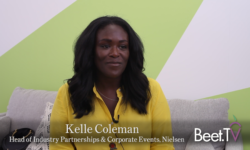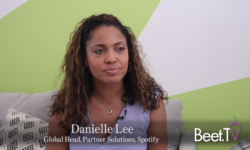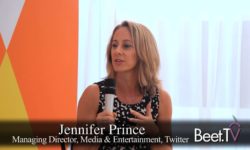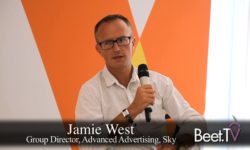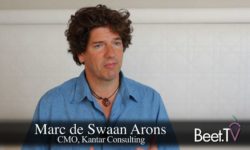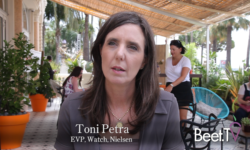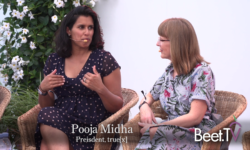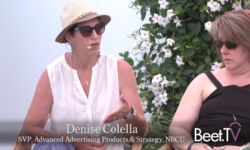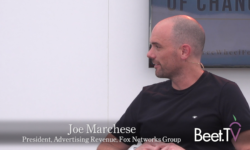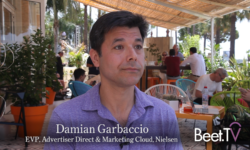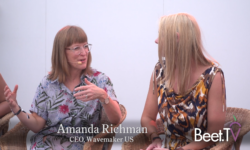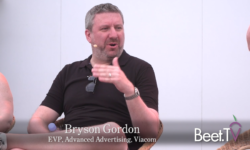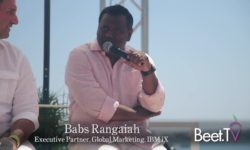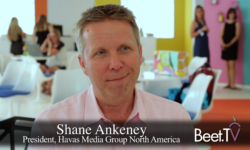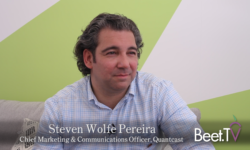CANNES — Why broadly advertise convertibles to everyone in Russia when you can now target potential buyers by vehicle segment? “The thing that’s really exciting me right now is actually being able to create more relevant one-to-one communications with consumers,” says Allyson Witherspoon, Nissan Motor Corp.’s GM, Global Brand Engagement.
“We have so much available data in our hands now that we’re able to customize content and have more personal conversations with consumers, as opposed to just kind of talking at them whether or not it’s relevant to them in their daily lives,” Witherspoon adds in this interview with Beet.TV at the Cannes Lions International Festival of Creativity.
Addressable advertising is enabling Nissan to find people who are actually in-market for certain vehicle groupings. “The way we look at our vehicles, it’s by segments. So if you’re interested in an SUV, let’s concentrate and focus on providing messages based around an SUV.”
This is much more effective than the traditional broad-brush approach to selling things, according to Witherspoon. “For example, in a global market, we don’t need to be communicating about convertibles in Russia,” she says. “We can find much more relevant and personalized experiences for people that are in market, currently shopping for automotive, as well as by segment. So if they’re shopping for sedans or SUV’s or trucks, we can actually customize those messages.”
Asked for her opinion about the offerings of the various TV networks, Witherspoon would like to see different types of content, having long been locked in to certain levels of ad formats. “It’s not really based on consumer behavior, it’s just based on how they’ve been sold for decades. So if we can have more types of content that are more relevant for consumers and the way that they consume content.”
She notes that it’s common knowledge that people are using multiple screens as they’re watching content. “But even if you’re looking at something that’s on television and you’re actually engaged in a program, maybe a 30-second isn’t the best type of format. Maybe there’s something else we can use to capture peoples’ attention to drive interest and consideration and move on to the next message.”
As for video ad formats with which viewers can interact, Witherspoon sees that space as a work in progress. “Right now, I think the formats for that are not quite up to speed. I think there are a lot of expectations for it, which I don’t think have necessarily been delivered on yet.”
This video is from a series of videos and sessions produced in partnership with FreeWheel at Cannes 2018 as part of the FreeWheel Forum on the Future of Television. You can find more videos from this series here.






